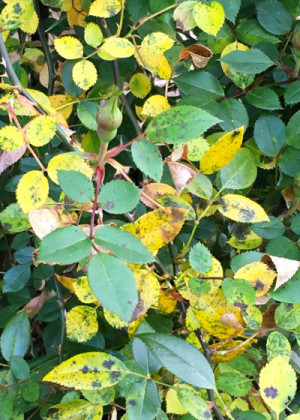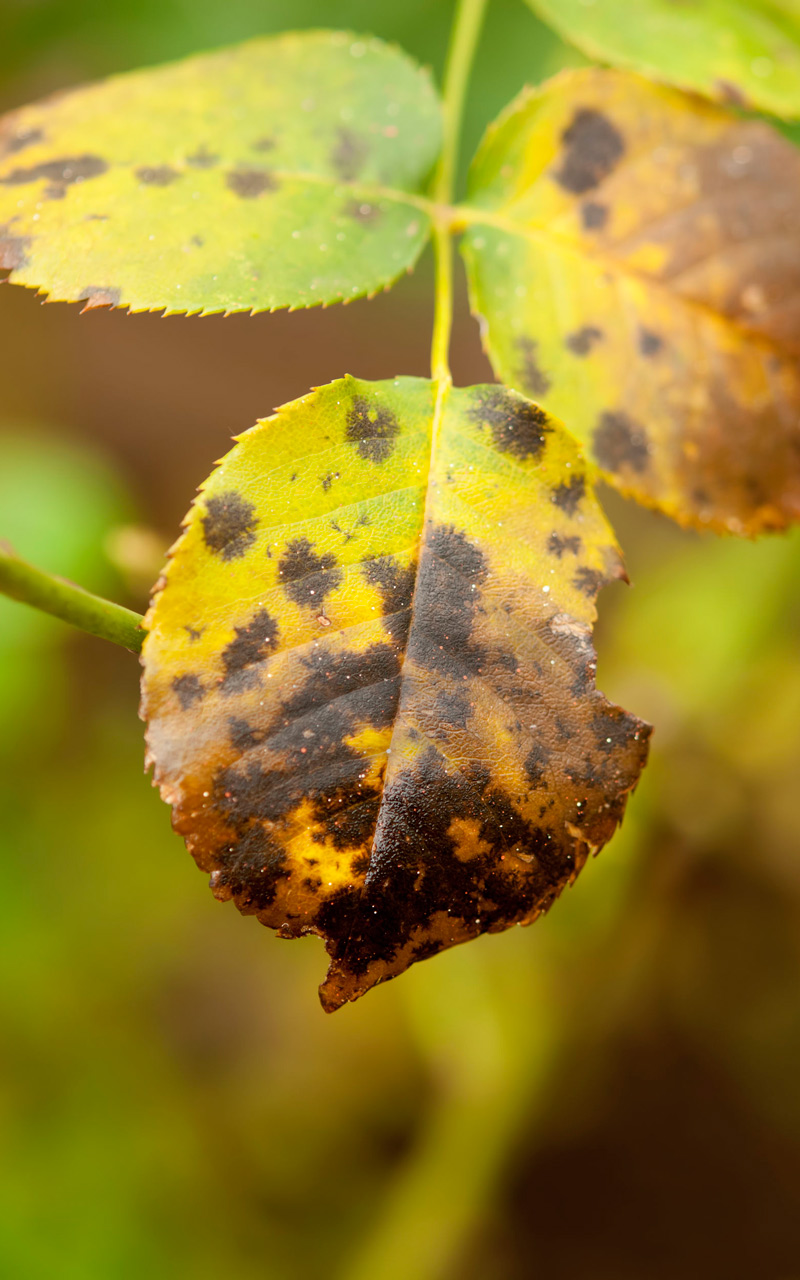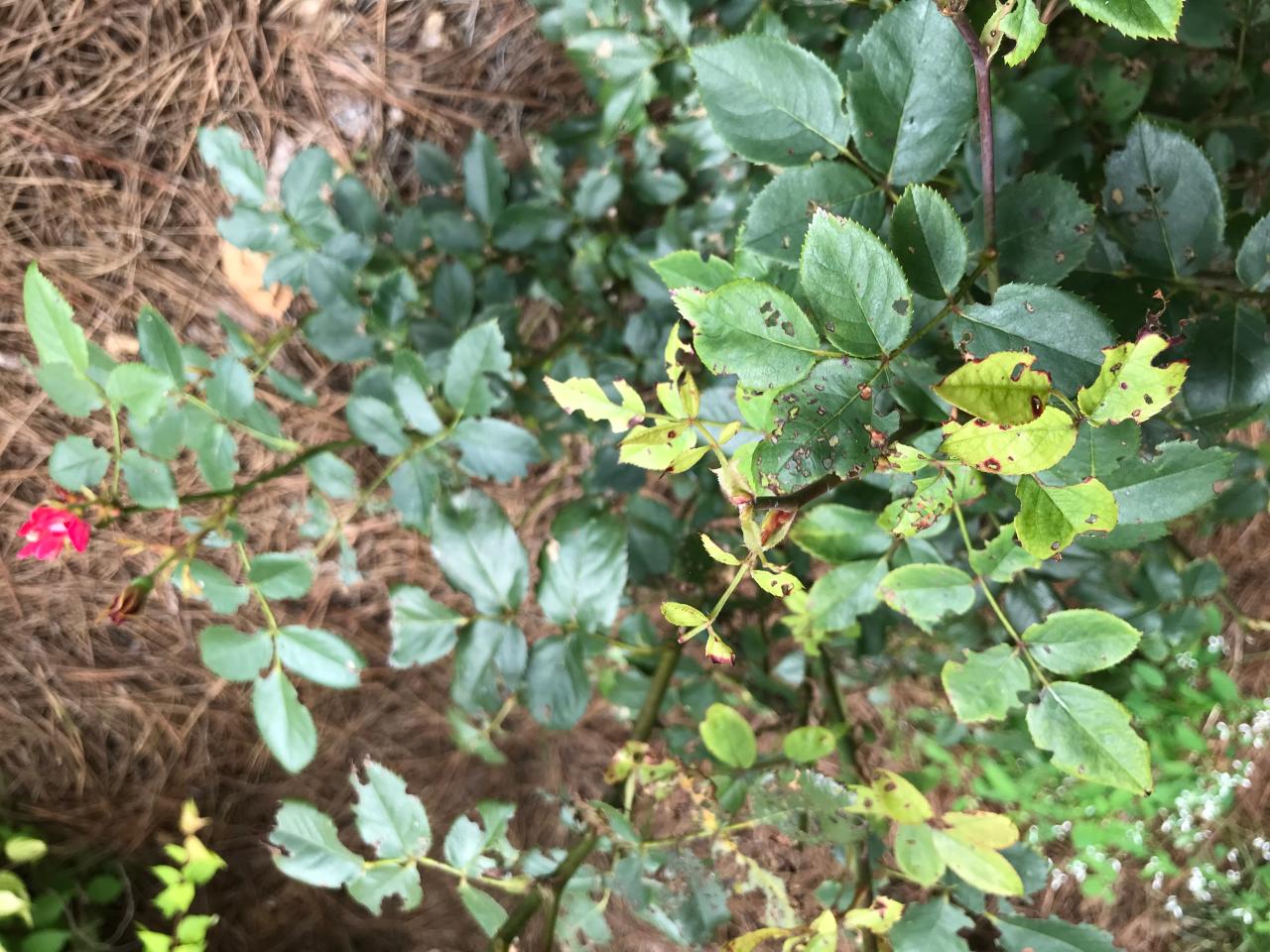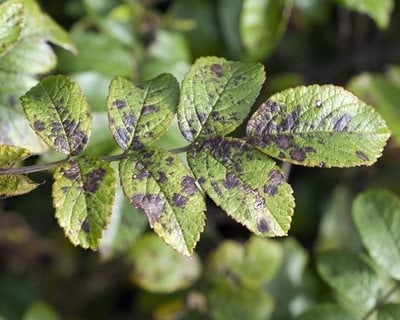What Causes Rose Leaves To Turn Yellow With Black Spots
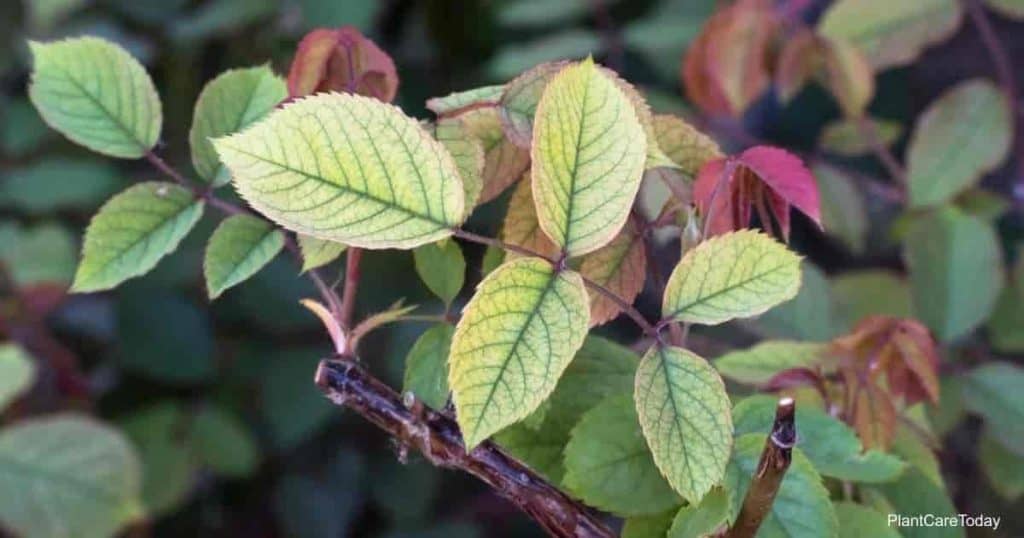
Yellow mottling on rose leaves is the first sign of mosaic virus followed by dropped leaves and dead plants.
What causes rose leaves to turn yellow with black spots. Although the prognosis for black spot is bleak a gardener has several options for minimizing long-term damage. The yellow leaves with black dots on roses form clusters of infected leaves. Soon the whole plant looks sick.
Rose black spot is caused by fungus. Black spot can be distinguished from other leaf spot diseases by its fringed edges and dark black color. A common cause of stress is heat stress.
Black spots with yellow-fringed edges up to 12mm across will appear on the leaves of affected bushes. If left untreated black spot can cause a rose bush to completely defoliate leaving frustrated gardeners scratching their heads over the demise of their favourite rose bush. As the spots grow larger they become ringed with yellow eventually causing the whole leaf to turn yellow and fall off.
The rose bush turns yellow and drops its foliage in an effort to cool down in the case of heat stress. These affected leaves will eventually become yellow and fall off. It is caused by a fungus Diplocarpon rosae which infects the leaves and greatly reduces plant vigour.
The stems may also have black or purplish spots. Rose slugs create brown spots on leaves eventually followed by holes in the leaf surface. Irregular black spots on the leaves that become feathery or fringed with yellow margins.
In more susceptible varieties black spots can also appear on stems. What Causes Yellow. Yellowing rose Rosa leaves with black spots are characteristic of black spot of rose Black spot is caused by the fungus Diplocarpon rosae.

Heat stress Another reason for rose leaves turning yellow is the rose bush is under some sort of stress.
What causes rose leaves to turn yellow with black spots. Black spot can be distinguished from other leaf spot diseases by its fringed edges and dark black color. Dark-brown to black leaf spots develop on the upper leaves which eventually become yellow and drop. A common cause of stress is heat stress.
One of the most common causes of yellow leaves in a rose bush is a fungal infection called black spot. Both old and new canes can also be infected with black spot. If left untreated leaves will yellow and fall.
It is caused by a fungus Diplocarpon rosae which infects the leaves and greatly reduces plant vigour. Although the prognosis for black spot is bleak a gardener has several options for minimizing long-term damage. Thrips produce brownish-yellow streaks and dark spots on the blossoms themselves which never open.
Caused by the fungus Diplocarpon rosae black spot begins just as its name suggests with black spots showing up on the surface of the leaves. In more susceptible varieties black spots can also appear on stems. They can appear as early as when the leaves first unfurl.
As the spots grow larger the leaves turn yellow. Treatment is the same but if a pesticide is used it must be labeled for black spot or anthracnose whichever disease you are treating. The yellow leaves with black dots on roses form clusters of infected leaves.
Soon the whole plant looks sick. Black spots with yellow-fringed edges up to 12mm across will appear on the leaves of affected bushes. When a rose contracts this fungus black spots will appear on leaves.

If left untreated black spot can cause a rose bush to completely defoliate leaving frustrated gardeners scratching their heads over the demise of their favourite rose bush.
What causes rose leaves to turn yellow with black spots. Black spot is the most serious disease of roses. Expect to see leaf markings from spring which will persist as long as the leaves remain on the plant. As the spots grow larger they become ringed with yellow eventually causing the whole leaf to turn yellow and fall off.
Rose black spot is caused by fungus. The rose bush turns yellow and drops its foliage in an effort to cool down in the case of heat stress. Both old and new canes can also be infected with black spot.
Black spots with yellow-fringed edges up to 12mm across will appear on the leaves of affected bushes. Although the prognosis for black spot is bleak a gardener has several options for minimizing long-term damage. The leaves will turn yellow and then drop from the rose bush to the soil.
It is one of the most. When a rose contracts this fungus black spots will appear on leaves. In more susceptible varieties black spots can also appear on stems.
Yellowing rose Rosa leaves with black spots are characteristic of black spot of rose Black spot is caused by the fungus Diplocarpon rosae. Black spot can be distinguished from other leaf spot diseases by its fringed edges and dark black color. A common cause of stress is heat stress.
Treatment is the same but if a pesticide is used it must be labeled for black spot or anthracnose whichever disease you are treating. One of the most common causes of yellow leaves in a rose bush is a fungal infection called black spot. Dark-brown to black leaf spots develop on the upper leaves which eventually become yellow and drop.


